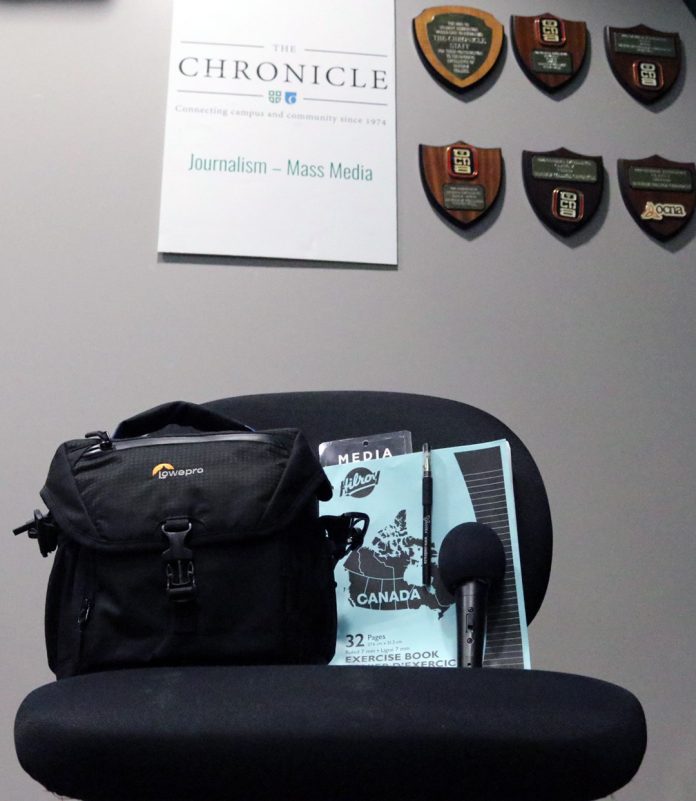In an era where conflict reporting is more dangerous than ever, news organizations must take every precaution before sending journalists into high-risk areas.
Angela Murphy, Foreign Editor at The Globe and Mail, shared how the newsroom carefully weighs each decision to ensure reporter safety in dangerous regions. Murphy emphasized that sending a journalist into a conflict zone involves extensive discussion and procedures.
“There’s a discussion between the reporter, myself, the deputy editor and the editor-in-chief usually. And it really is case-by-case,” she explained. Ultimately, the editor-in-chief has the final say, but the decision-making process is collective, involving multiple layers of risk assessment.
One major factor in these decisions is whether the journalist can be insured. “There are places where we can’t get insurance because it’s so dangerous. So [we’re] reluctant to send people into that situation,” Murphy said.
Risk assessments rely on information from foreign affairs departments, security consultants and local contacts, also known as ‘boots on the ground.’ For example, when considering sending a journalist to Tehran, the newsroom considered the potential risks of detention.
“Getting into Tehran and getting a visa [was] essentially a good message that they’re open to journalists coming,” Murphy said. “Otherwise, we would never have obtained a visa.”
However, Murphy acknowledged that things can change quickly, and a place can go from dangerous to extremely dangerous in matter of hours.
To ensure that journalists are capable of tackling dangerous assignments, The Globe and Mail has instituted mandatory hostile environment training. “We do that with a third party. Often, they’re led by foreign military people, and they walk them through things like field medicine, [and] how to deal with gunfire,” she said.
Journalists also learn to recognize landmines, treat injuries and navigate combat situations.
This aligns with the recommendations from the non-profit Committee to Protect Journalists (CPJ), which advises that journalists engage in a risk analysis before entering a conflict zone to determine risks and make choices for potential equipment, training and situations like emergency evacuations.
Globe and Mail journalists are set up with encrypted communications, GPS trackers and have regular check-ins. “There’s quite a protocol to working in the field before they go, they’re well-versed on what we expect,” Murphy said.
According to the International Center for Journalists (ICFJ), journalists should always wear protective equipment, be aware of the weapons being used around them and develop an escape plan for areas where they are reporting.
Even with proper preparation, situations on the ground can change unexpectedly.
“We’ve had people call us and say, ‘I think I’m getting too close to the front line. What do you think?'” Murphy said. In those situations, the advice is always clear:
“There’s no story worth your life.”
Experience can also play a key factor when it comes to assessing risks. Veteran war correspondents like Mark MacKinnon bring years of experience in navigating conflict zones.
“[Mackinnon] gets a sense from his contacts and what he’s seeing and hearing about if things are starting to get hot,” Murphy said. “In which case, they will just [get] out of wherever they are.” Mackinnon has reported from Russia, the Middle East and China, and recently won a foreign press media award for his story on a team of elite Ukrainian soldiers.
Conflict zones aren’t just limited to war zones, however. Coverage of events like protests in the United States has drastically changed over time, as what once seemed to be a safe zone for reporters has now become more dangerous.
“We see what happened in Minnesota after George Floyd. There are some very violent protests and police reactions to protesters,” said Murphy.
The 2024 World Press Freedom Index by Reporters Without Borders notes that political groups increasingly fuel distrust of journalists, raising the risks of threats and violence against the press.
Photojournalists often take even greater physical risks than reporters, as they must position themselves close to unfolding events. “Photographers work a little differently, and have a different risk tolerance,” said Murphy.
As conflicts become more unpredictable, the dangers faced by journalists are escalating. While the work of war correspondents is vital, newsroom leaders must make difficult decisions to ensure reporters return home safely.
The pursuit of truth remains foundational to journalism, but news organizations must continue to adapt, refining their safety procedures to navigate the ever-changing challenges of conflict reporting.




